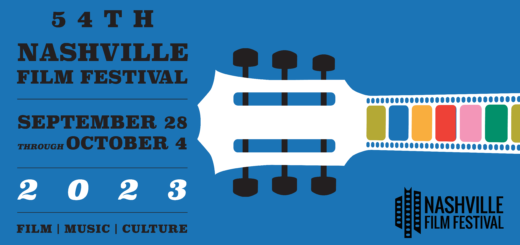ERNIE and JOE: CRISIS COPS @Nashville Film Festival
Nashville Film Festival Coverage via Jason Sparks, Our Man in Nashville
I’m loath to identify a favorite film from NIFF 19, but if I were to label a film as the most important one I saw, the only real contender for that title would be Jennifer McShane’s Ernie & Joe: Crisis Cops. Speaking flatly, you should see this film. If you have HBO, you can—the network is airing it November 19.
Why do I think it’s so important? I may be biased as I have experience with the subject matter. My oldest son, about whom I’ve written from time to time on here, has had mental health struggles. They’re dormant now, but they haven’t always been—he has been inpatient at a mental hospital several times, including after an incident in which he broke my nose, and another in which voices only he could hear convinced him to put his fist through a window.
Several of those incidents, and the difficulty (to put it mildly) inherent to them, have been mitigated by the fact that Nashville’s police are neighborhood-based, and have been so since Nashville and Davidson County became a Metropolitan Area in the late sixties. There are cops who work our fair city’s East Precinct (serving East Nashville, AKA Inglewood, AKA where, as the kids say, I stay) and they know Robert. Instead of approaching this unbalanced young man with guns drawn and barked demands, they walked up to him like old friends: “Hey, guy! It’s officer Rashaan here—what’s going on, buddy?” It made all the difference in the world. It got my son to the hospital alive.
Ernie & Joe is a documentary about a relatively new branch of the San Antonio PD, known as the Mental Health Unit (relatively new in that it has only existed since 2008). Why create a Mental Health Unit? The better question would be why not to create one: the Treatment Advocacy Center, an organization devoted to improving the treatment of the mentally ill, posits that 25% of all jail inmates and 15% of all state prison inmates have a mental illness, and that 25% of the people ultimately shot by law enforcement have a mental illness. In other words, the worlds of law enforcement and the mentally ill are, essentially, guaranteed to intersect; as such, it makes more sense to the SAPD to have officers trained to respond to such cases, and ideally get the people with whom they interact involved in treatment and therapy, as opposed to jail.
McShane focuses on the titular Ernie and Joe—Ernie Stevens and Joe Smarro, to be exact. Ernie is the older of the two, with longer tenure on the SAPD; Joe is either a late Gen-Xer or an early Millennial. Ernie juggles police work with joint custody of his children and pursuing a degree. Joe is a retired Marine, which actually augments his usefulness on the MHU, as he has common ground with many (too many) of the people the two cops meet.
The majority of the film is exactly what we would expect in a documentary about police—ride-along footage, grainy footage from dashboard cams, etc. I’m not complaining about this—how could a doc about police be made without such elements? Indeed, the verite footage is the ideal method for conveying exactly what Ernie & Joe do, and how they do it. In one memorable scene, the officers are working overtime, doing regular uniform patrol (when on duty as the MHU, they are intentionally not in uniform). By this point, they are known throughout the SAPD to be MHU officers; as such, when working a regular patrol, the dispatchers will usually contact them first about any mental-health-related incident. Which is how we wind up watching the two cops, entirely via dash-cam footage, talk a young crack addict out of jumping off of a highway overpass into traffic. I found myself glued to the screen, barely breathing, as the entire discussion/negotiation played out; it’s an unnervingly long scene, in which E&J are not always apparently going to succeed at talking her down. Neither man ever approaches her with guns or handcuffs; Joe, in fact, sits down on the pavement (as such, he cannot grab her and pull her back, as she fears he may do) and finally coaxes her away from the edge of the overpass by saying, “I need you to come down here—you’re scaring me, okay? I can’t handle you being up there.” These are not Cops with a capital C. They’re fellow humans, with a lower-case f and h.
The film also makes the point that the MHU’s involvement does not end with the resolution of the incident. Ernie & Joe keep in touch with the young woman, and we revisit her throughout the film; her story, thankfully, takes an upward turn, in no small part because Stevens and Smarro follow up on her, as they do with everyone they encounter. Suffice to say, the titular officers are very humanized within the film, and that extends to the rest of the law enforcement community as well. We learn that police officers not only interact often with the mentally ill, they aren’t immune to it themselves—a sobering detail mentioned in the film is that law enforcement personnel, compared to people in other industries, are four times as likely to die by suicide. There is equal focus given to the efforts E&J make to maintain their own mental health, as well as the mental health of other MHU members, and other SAPD officers in general—and to spread the gospel of CIT (Crisis Intervention Training, in which MHU members are highly-trained) to other police departments, other first-responders, and even school faculty. The argument is made that these guys are making a positive difference, and we are overwhelmed with supporting data.
See this film. Ours is a world full of negatives, and Ernie & Joe is an unflinching look at a positive that’s only gaining momentum.






















